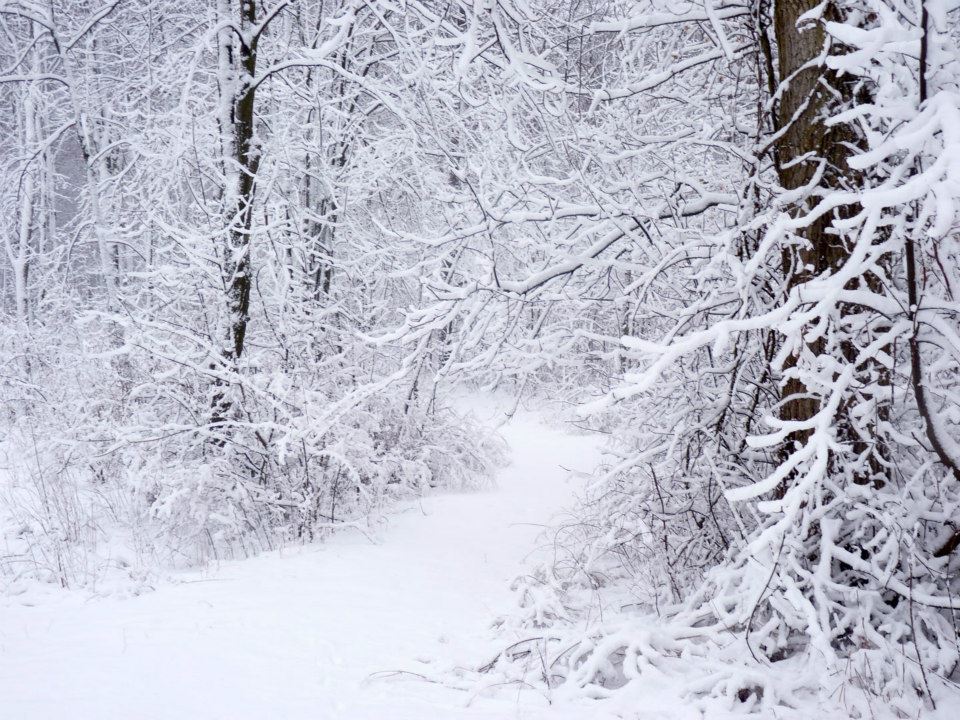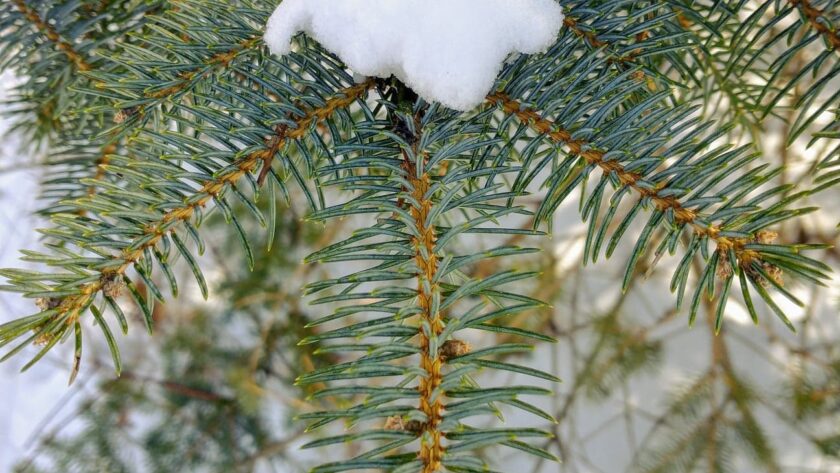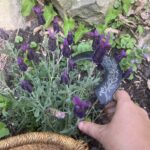The time of the greatest darkness is upon us at the winter solstice. Each morning, the sun seems to struggle to rise and hangs low in the sky. The world is covered in frost, cold, and snow, and the darkness of winter sets in. This is a hard time for many, perhaps more so now than before, given the cultural darkness and challenges that so many of us are facing globally and locally. So facing the darkness, in this very challenging time, takes something extra.

In my first post on this series (Receptivity at the Fall Equinox), I made the case that the traditional Wheel of the Year was developed and enacted under very different conditions than our present age. We now live in the Anthropocene, a period of human-driven climate change and cultural unrest which is very different than the Holocene, the period of relatively stable climate where the Wheel of the Year was developed. I argue that it will take a different kind of approach to celebrating the wheel of the year if we are to thrive in this age. Thus, I am offering a series of eight posts this coming year that focus on each of the traditional wheel of the year holidays and how they might be adapted to these darker and less stable times. I believe we need new approaches to celebrating our traditional wheel that emphasize the skills and vision that will help us not only navigate the continuing crisis but also help us bring forth a better future for our descendants and all life.
Previous posts in this series include the Fall Equinox (Receptivity) and Samhain (Release). So if we think about how the wheel turns, after release–letting go, getting rid of all that holds you to former structures that are, frankly, crumbling around us. So what comes next in our wheel of the year? I argue at the time of deepest darkness, we should pay attention to our own needs and healing with the theme of restoration – for, without this, no work can proceed as we move forward back into the light and tackle some really hard stuff to come, stuff that is more externally focused! In other words, we have to get our own house and mental health in order (the sequence of Fall Equinox- Samhain -Winter Solstice) so we can look externally in the year to come.
The Need for Restoration: Languishing and Solastalgia
A new term is popping up on news feeds as of late: “languishing.” Languishing is somewhere in between well-functioning and deep depression. It is a state of feeling apathy, restlessness, feeling like the things that once brought you joy no longer do, feeling unsettled, and not interested in life. According to this article, research demonstrated that a good number of people are languishing, particularly in younger generations. This term describes well what many people are facing. What do we do about languishing rather than thriving?

The other piece that is coming into play with climate change is the concept of solastalgia. Coined in 2007 by Albreiht et. al., they define it as follows “solastalgia is the distress that is produced by environmental change impacting on people while they are directly connected to their home environment.” If we think about all of the increasing changes we face–from wildfires to droughts to continued extraction activities, this concept grows more pressing and real. How many of us have watched a forest that we loved get cut or burned, a pipeline come through our favorite swamp, or even a mountaintop get removed? How does that affect our mental well-being?
The real crux of the issue that I see is that things aren’t going to get any better globally. Climate change is going to grow increasingly worse, and with it, a lot of other things are also on the decline. Sure, things may stabilize for a bit, but we are in the ‘slow crash’ and things are going to keep tumbling down. Thus, we have to figure out ways to support ourselves and our communities–and to be strong enough to face our present age. I’m not mincing my words here. I don’t think at this point anyone can ignore the crisis of our age or its severe impact on our mental or physical health. And if we are going to thrive in the coming age, we need to be in the strongest place possible: mentally, physically, and spiritually.
Understanding Restorative Activities
Restoration can be defined in a few different ways. It includes returning to health, bringing back to a former position or condition, or improving the condition of someone or something. Part of restorative work is understanding our needs: what needs are being met, what needs remain unfulfilled, what we have the power to change and control, and what we have to learn to accept.
Restoration Meditation: Uncovering what Works
Understanding your own needs for restoration and rejuvenation is really central to this work. I think that sometimes we buy into the hype of various products and “self-care” gimmicks, as though they can provide us the healing and restoration that we need. Or we listen to what other people think is a good idea rather than our own intuition. So take a moment to set all of that aside and start thinking about your own needs and how you can be restored. Thus, starting with this meditation can help you work through what is possible and create a game plan.
- Think about the times that brought you the most rest. What were they? When were they? What conditions did they come under?
- Think about the time that you feel you were in the best mental health. When was that? What conditions were present?
- What is your perfect restful day look like? Is it away from home or at home? What are the conditions that allow you to have this perfect restful day?
- Do you ever prevent yourself from practicing self-care? Think about the deep emotions or issues that might be present in this issue.
- Does anyone else ever prevent you from rest and healing? Is there a way to mitigate this problem?
- How can you create or replicate the conditions that allow you to rest? What limitations or issues might you need to address?
- What basic needs do you have that are unfulfilled? Is there anything you can dot work to fulfill them?
- How do you support your physical body? What can you do differently (food, exercise, rest, etc.)?
- How do you support your emotions and mental health? What can you do differently?
First, understanding your own needs is central. Nobody can define for you what rejuvenates you and how you can find your own healing–you must do that for yourself. And your needs for restoration are not necessarily the needs of other people. For example, for me, the most restful thing I can do is stay home and be in my gardens and art studio, have a lot of unstructured time where I have no obligations to anyone, stay off of social media, and not answer texts or my phone. Those things can create a deep sense of peace, the flow of awen, and the ability for me to dig into some really cool projects uninterrupted. This is really different than, say, someone who wants to travel far from home and spend a week on the beach. The point here is to know yourself and how you work.
The second part of this, getting at bullet point four, is self-sabotage or sabotage by other family members or close friends. Sometimes we actively or subconsciously prevent ourselves from getting the rest and restoration we need. Deeply examine any of these issues and where they may come from as part of this work. And sometimes, we have people in our lives who actively try to thwart self-care activities–and its important to recognize both of these so that we can heal.
Restoration Activities
White Pine Forest Bathing and White Pine Healing Steams, Baths, and Teas

Turning to evergreens, particularly the pine family and white pine, is an excellent idea as a restorative activity. Since the white pine is an evergreen tree, it reminds us of the green of summer and holds back the darkness. White pine, both physically and energetically, draws things out. Matthew Wood in The Earthwise Herbal, describes how, in the days of early America, people would simply walk through White Pine woods to help heal their consumption and tuberculosis. Even today, herbalists use White Pine steam treatments and tinctures for people who have problems with breathing. The connection to the breath is important–as we go about our lives in this very difficult age, it feels like many of us are holding our breath.
As a restorative activity, visit a white pine forest or spend time with a white pine tree. Make sure you ask the tree’s permission to spend time and leave an appropriate offering. Simply be with the tree or in the forest, breathing in and out, sitting near the trunk, wandering and looking for messages, and allowing the energy of the white pine to soothe you. Release the tension in your body, mind, and spirit.
Additional activities surrounding the white pine include doing a white pine bath (gather up needles with permission and an offering, add them to a bath and soak), a healing white pine tea (brew needles for 3 minutes, add honey), or a white pine herbal steam (instructions here). All of these can be combined with other winter solstice activities or
If you don’t have white pine in your ecosystem, you can find an equivalent conifer–a dominant evergreen conifer tree, tall, majestic, with medicinal qualities ideally connected with the lungs.
Slowing Down
The holidays around the Winter Solstice, at least here in the US, feel like an insanely busy time. Making a commitment to yourself to take some quiet moments and/or embrace slowness really matters. Our culture glorifies busyness and the constant ticking off of to-do lists and this can contribute substantially to feeling over-worked, over-committed, and exhausted. The following suggestions are ways to “slow down” and embrace a slower approach–which itself can be very rejuvenating.
- Candlelight evenings and embracing the darkness. Living by candlelight is another restorative activity that can have substantial restorative benefits. Electronic devices emit a blue light which can inhibit the production of melatonin, which can prevent you from falling asleep. Shift your lighting to any kind of natural light, even for an evening or two. Pick up a real book (not an e-reader or phone) and enjoy the quiet, slowness, and stillness of the winter. Embrace the extra sleep that this kind of practice allows.
- Technology detox. Allow yourself to have a serious break from your electronic devices and the many obligations they bring. Disconnect–for a few days, a week, whatever you want to do–and go technology-free. To do this successfully, let friends or family know what you are doing and make a commitment in advance. Often when people do this, at first there is a bit of panic or even withdrawal–we are so used to constantly picking up our phones, etc. But after a day or two when the initial shock wears off, you realize how much better you feel without the constant technological tether. This can create more meaningful opportunities to engage in a spiritual practice, explore one’s own understanding of the world, or embrace bardic arts. Consider how you might fill the time normally spent interacting with technology with restorative activities.
- Embracing a “slow” philosophy. The slow movement has been gaining traction for many years. The philosophy has many components, slow food, slow spirituality, slow work, and slow time to name a few. The principle is simple and yet very difficult to enact: we slow down. We take our time to cook healthy food that came from local sources or that we grew, we reframe our relationship and time commitments to work, we create unstructured leisure time, and we reject the many cultural demands that say we must work harder, faster, and always be on the go. This is an incredibly restorative activity!
The Druid’s Retreat
Another restorative that can be done is for you to have a retreat. A retreat is a fantastic way to set aside time for spiritual growth and rejuvenation. A retreat can restore you in ways that few other things can. I have two posts that go into detail about how to set up your retreat and how to go about your retreat. Winter is a lovely time to do a retreat–rent a cabin, find a way to do a home retreat, etc. I always do a winter retreat–usually in late Dec and early January, when I’m off from my job, when the rush of the holidays has ended, and it simply allows me time to rest and dig deeply into my own spiritual practices.
Conclusion
My suggestions above hopefully will get your own creative ideas flowing for how to embrace rejuvenation and restoration at this darkest time of the year. This is such important work to do–for if the healer is herself not healed, how can she heal others? As we begin to move forward from the Winter Solstice and back into the time of light, our bodies, spirits, and minds are restored and we can consider the powerful and meaningful work that is to come. Blessings of the winter solstice to you, dear readers!
Announcements:
Article on Druidry 101: Finally, I wanted to share my article on Druidry 101 that was published this week in Spirituality and Health magazine. Please check it out!



A most excellent post. Thank you!
You are most welcome, Rowan! Thanks for reading 🙂
Thank you so much for this, Dana. It came at the perfect time.
You are most welcome, Susan! I hope you are doing well! 🙂
Reblogged this on Paths I Walk.
Thanks for the reblog!
Congrats on getting published in that magazine!
Thank you! 🙂
[…] A 21st Century Wheel of the Year: Restoration at the Winter Solstice […]
Thank you for this most generous post! I have thought a lot about the concept of restoration over the years. In some environmental working groups, restoration is considered an ecological impossibility and perhaps even an undesirable pursuit. Restoration can imply a return or harkening back to something prior. Lately I have contemplated the value in the notion of re-storying. How is this different from restoration? How is it similar, as far as many of our desires and imperatives for healing and thriving.
Hi! Thanks for your comment. I think as a permaculture designer, we think in similar patterns to the environmental groups and like to use the term “regeneration” over “restoration” for similar reasons. E.g. if I restore a habitat, I can’t eliminate all species who are here now that weren’t here before (honeybees, earthworms) but I can bring it into a state of healthy balance using regenerative techniques. That land may never be what it once was because time has changed and the context is different, but it can be healthy again, and host at-risk species, etc.
For people though, I think things are a little different and the term ‘restoration’ can apply. Can I get back to a place of balance and health that I previously enjoyed? In most cases, the answer is yes. But does that mean that my recent experience has altered me, perhaps in a fundamental way? Yes. I am growing and changing, but I can be restored and work toward that goal. This is particularly true, for example, with regards to trauma and traumatic experiences.
I do think there’s an uptake in the idea of telling new stories, re-storying, and re-visioning. I think these are really powerful concepts, both personally and ecologically, and have a lot of potentials. Humans are ultimately very story-driven, even if modern culture has mass-marketed storytelling. Telling new stories and crafting a new vision is a powerful way of leveraging change in a multitude of ways.
How do you see these issues? I’d love to hear your thoughts :).
It is scary how similar I my thoughts were to all this lately. I’m not a druid, I’m not anything really but my thoughts were along the same path. I’ve just started following your blog and I am glad I did.
Glad to hear you found the blog. Also great to hear we are on a similar wavelength!
Dear Dana — do you have any idea why we now have such harsh unheavenly weather and temperature extremes? Bear in mind it wasn’t like this in God’s finished Eden. Best regards, Peter
On Sun, 19 Dec 2021 at 13:30, The Druid’s Garden wrote:
> Dana posted: “The time of the greatest darkness is upon us at the winter > solstice. Each morning, the sun seems to struggle to rise and hangs low in > the sky. The world is covered in frost, cold, and snow, and the darkness of > winter sets in. This is a hard time for many,” >
Hi Peter, Thanks for your comment. Yes I do–Human-driven climate change.
I do find your idea of adapting the wheel of the year to the conditions of the Anthroppocene very convincing. Thank you!
Hi Tinderness,
Thank you–and thank you for reading!
So many important things to think about here, Dana. Thank you for putting so much energy into your blog posts, and congratulations on getting your article published in Spirituality and Health.
Hi Cynthia, thank you! And thank you for reading and taking the time to comment.
Both Druid’s Garden on FB and a Wiccan led me here. I’m very happy to know these resources and hope to learn more from them. I feel Druidism is my path and definitely look to learn all I can about it as time goes by.
Glad to hear you are interested in druidry! Welcome :).
Thank you for this timely article. I know so many people who are in denial about what is coming . I have known for a long time this was coming ( all those cycles changing ) and thought I would be better prepared than I am. So thank you for speaking the truth. Hope man will wake up to what is going on. May the awens shine down on you, Phyliss (Bard in training )
On Sun, Dec 19, 2021 at 7:32 AM The Druid’s Garden wrote:
> Dana posted: “The time of the greatest darkness is upon us at the winter > solstice. Each morning, the sun seems to struggle to rise and hangs low in > the sky. The world is covered in frost, cold, and snow, and the darkness of > winter sets in. This is a hard time for many,” >
Hi Phyliss,
I think a few years ago, I shifted from thinking about “what is coming” to “what is here and what we are already living with today.” There’s no denying human-driven climate change on top of many other challenges we face are probably going to get a lot worse before they get better. Thus, if I’m to be resilient and ethical, I have to face this with an open mind, open eyes, and an open heart. To think about how to be compassionate and understanding as well as resilient. Blessings to you and thank you for reading 🙂
I so appreciate this article that you express so well. It acknowledges things I have been thinking and feeling. I have participated in Mayan traditional ceremonies and other indigenous ceremonies and have observed natures response to expression of love, gratitude connection in these ceremonies so I believe thru conscious connection with the elements we can heal and mitigate at least some of the imbalances we are experiencing in our climate and natural world.
When we take time for ceremony to express our love for this amazing earth we live on then the natural world responds with what we need.
So many of us are out of balance at this time but it seems at least more and more of us are returning to some kind of connection with this environment.
Thank you for all that you share!!!
Hi Katree,
Thank you for your kind comments! I completely agree–it’s all about righting the wrongs, healing, and balancing, and being the best caretakers of this beautiful planet that we can! 🙂
[…] A 21st Century Wheel of the Year: Restoration at the Winter Solstice […]
I’m in the process of recovering from burn-out and depression and learning different ways to cope with anxiety and with events that I have little influence over but that hit me hard emotionally. It’s been a year of change, of healing past trauma and changing habits as well as having new challenges to deal with. For a very long time, I’ve denied myself the rest and room to breathe that I actually need. That is one of the habits I’m slowly changing, though. Thank you for the ideas and the insightful questions. They made a wonderful addition to my celebration and obviously to my process.
Hi JudithO,
I’m glad to hear that these suggestions were helpful to you. I wish you well on your healing journey! 🙂
Hi, Dana–I really love you’re website although I don’t have as much time to read it as I would like. I was just checking out vox.co and they have an article about Restor, a mapping tool that shows where people are making efforts to restore the natural world. I thought you might like it. (restore.eco/map)
Thank you, Anne! I’ll check it out! 🙂